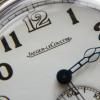brenray cleaning machine
-
Recently Browsing
- No registered users viewing this page.
-
Topics
-
Posts
-
Thanks Dell. I thought about silver soldering. Have never done it but would like to give it a go. Do you think to put flux on the butted joint then run the solder in or to maybe brace it with a piece of scrap spring steel?
-
By rossjackson01 · Posted
Never and others. Yes, like you I do spend a fair amount of time reading the contents of this forum. I find it better that any other. Clear, lucid, no Prima Donas, and most of all an easy access without adverts. All thanks to Mark. God bless you mate. You give so much to many of us. What if? No Mark? Hypothetically. A forum. I did run a forum for a few years. Really enjoyed it, but became so engrossed that it did affect my health. I gave to to others to run. Not been back. It was very successful and rivalled a number of large paying sites. No adverts, no others but me. I did ask and listen to members comments and it worked well. Costs Having a domain name, £10 annually. Register the site with a forum company, free. Build the site using the forum company guide lines, free. It looked and ran almost the same a Mark's. All the same facilities. The cost was only £5 per month, but counted visits (views). If I recall, it was that price for 5,000 views. Each extra 5,000 views increased the price by £2 per month. Success was my own personal undoing. From £5 per month initially, it rose to £60 a month and looked like increasing. This was 10 years ago. I could not afford that, and asked it anyone would like to take over and someone did. I would assume that this is the price that Mark is funding for us all. His return is our continued comments on the internet about his course, and the fact that many of the big names on YouTube mention him as their Tutor. Those of us who have done, and are still using, his course, benefit. In comparison to other courses, I can't believe how cheap it is, and the value is exceptional. It is the structure that gives the value. Long may Mark reign. Ross -
By TheQuietMan · Posted
Hi all, total newbie to watchmaking and I've had a bit of a mishap. Just completing level 2 and was doing ok, but I was just on the last part of the reassembly of my ST3620 when the balance end stone shot across the room, just as I was trying to see if I had put the correct amount of oil between it and the balance end, aarrrgh! Been on my hands and knees combing the carpet for 20mins looking for it but to no avail. Does anybody know where I can get a replacement from and what to look for please?? Thanks. -
Get someone local to tig it ,very easy fix and should only take a few minutes so probably wouldn’t cost much ,or failing that get it very clean and silver solder it. Dell
-
Hi, The winding pin is not split, well that's how it was when I obtained the watch. The movement is front-loaded and here's a picture of where the case screws are fitted. The face picture is before I dismantled it. Quick update. I've always had a nylon ring sitting in the parts try that I wasn't sure where it went and left it to the last thing as I know it must be part of the case assembly. Anyway, looking at the picture in my last post you can see, just under the winding stem, a white-looking object, this is the nylon ring 🤭 So, I had to remove the dial again and replace the ring. Once this was all back together I placed the movement in the case and realized my initial problem maybe is not a problem as it looks like I can screw the movement back in the case and then place the hands as the dial is nearly flush with the outside of the case anyway so I'll be able to check for alignment. if all is good then just fit the crystal and bezel 🤔 I can't think of any issues with this approach but please comment if you think I've not thought of something. Another lesson learned as well. Take more pictures not just of the movement parts and location 😅
-








Recommended Posts
Join the conversation
You can post now and register later. If you have an account, sign in now to post with your account.
Note: Your post will require moderator approval before it will be visible.